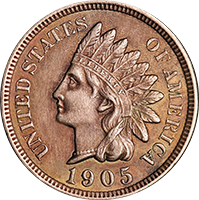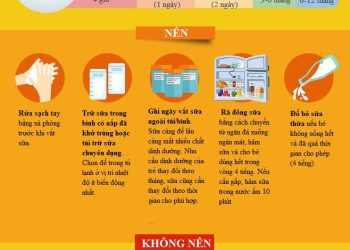The 1905 Indian Head Penny, minted only in Philadelphia without a mint mark, is worth $2-$3 in circulated condition but can reach over $17,000 for MS-67 Red grade coins. Value depends on condition and color (Brown, Red-Brown, or Red). Notable errors include the Repunched Date (RPD) variety worth $100-$420, off-center strikes ($485), and doubled die obverse. Proof coins in PR-67 grade can exceed $11,750. For accurate valuation, consider professional grading through PCGS, NGC, CAC, or ANACS to verify authenticity and maximize resale value.
That worn copper penny sitting in your grandmother’s collection might be worth more than pocket change. The 1905 Indian Head Penny represents one of the final years of this iconic American series, and while millions were minted, certain examples command prices exceeding $17,000 at auction. Understanding the factors that separate a three-dollar coin from a small fortune requires knowledge of grading standards, color designations, and mint errors that can dramatically increase value.
Why 1905 Indian Head Pennies Never Have Mint Marks
Every single 1905 Indian Head Penny was struck at the Philadelphia Mint, which explains the universal absence of mint marks on these coins. Unlike later years when branch mints in Denver and San Francisco added their distinctive “D” and “S” markings, Philadelphia traditionally produced coins without any identifying letter during this era. This means if you find a 1905 Indian Head cent with what appears to be a mint mark, you’re likely looking at post-mint damage or environmental deposits rather than an authentic variety.
The Philadelphia facility produced approximately 80 million Indian Head cents in 1905, making it a relatively common date in the series. This high mintage means circulated examples remain affordable for beginning collectors, with well-worn specimens trading for just two to three dollars in Good-4 condition.
How Color and Condition Determine Value
The value spectrum for 1905 Indian Head Pennies spans from a few dollars to five figures, with condition and surface color serving as the primary determinants. Numismatists categorize copper coin surfaces into three distinct color classifications that directly impact market value.
Brown (BN) examples show complete oxidation, displaying the dark chocolate patina that develops naturally over decades of exposure. These represent the most common color designation and consequently command the lowest premiums. A circulated Fine-12 Brown specimen typically sells for five to seven dollars, while an About Uncirculated AU-50 example reaches twenty to thirty-six dollars.
Red-Brown (RB) coins retain partial original mint luster mixed with natural toning, representing an intermediate state of preservation. At the Mint State MS-65 level, Red-Brown examples fetch two hundred to two hundred fifty dollars, showing a modest premium over their fully Brown counterparts.
Red (RD) designations identify coins preserving their original copper brilliance with minimal oxidation. These command substantial premiums, with MS-65 Red specimens valued at six hundred fifty to six hundred seventy-five dollars. The color difference alone creates a price gap of over four hundred dollars at this grade level.
The most dramatic value increases occur in gem uncirculated grades. An MS-67 Red example recently exceeded seventeen thousand dollars at auction, demonstrating how condition rarity drives exponential price appreciation. Proof strikes, which were specially manufactured for collectors rather than circulation, reach even higher values, with PR-67 Red specimens surpassing eleven thousand seven hundred fifty dollars.
Valuable Errors Worth Searching For
Manufacturing imperfections from 1905 create collectible varieties that command significant premiums over standard strikes. The most documented error for this date involves the Repunched Date variety.
The Repunched Date (RPD) error occurs when the date digits were punched into the working die multiple times in slightly different positions, creating a doubled appearance. On 1905 pennies, this doubling appears most prominently on the numeral “5,” where careful examination reveals ghost images of the digit slightly offset from the primary impression.
Value increases substantially for authenticated RPD examples. A certified AU53 Repunched Date specimen trades around one hundred dollars, while MS63 examples reach approximately two hundred fifty dollars. An ANACS AU58 RPD coin listed through Cointown.com carried a price tag of four hundred twenty dollars, demonstrating strong collector demand for this variety.
Additional error types, while not specifically cataloged for the 1905 date, can appear on any Indian Head cent and significantly boost value. Doubled Die Obverse (DDO) errors show doubling on design elements, particularly visible in the word “LIBERTY” on the headband. Off-center strikes, where the design appears shifted relative to the planchet, create dramatic visual errors—one 1905 off-center example was offered on eBay for four hundred eighty-five dollars.
Broadstruck coins, which were struck outside the collar die that normally contains the metal and forms the rim, display abnormally wide diameters and bold edge details. Struck-through grease errors occur when lubricant on the dies prevents full metal flow during striking, resulting in areas with weakened or missing design details.
Professional Grading Services and Authentication
Determining whether your 1905 Indian Head Penny justifies the cost of professional certification requires understanding the grading landscape. Third-party authentication protects both buyers and sellers by providing impartial condition assessment and encapsulation that prevents environmental damage.
Professional Coin Grading Service (PCGS) consistently achieves the highest resale premiums for classic United States coins, making it the preferred choice for valuable examples likely to be resold. Their population reports and price guides provide market transparency that buyers trust.
Numismatic Guaranty Corporation (NGC) offers comparable authentication standards with typically lower submission fees than PCGS. For mid-range specimens where certification costs represent a larger percentage of total value, NGC provides excellent value while maintaining market acceptance.
Certified Acceptance Corporation (CAC) applies additional scrutiny to already-graded coins, awarding green stickers only to examples that meet strict quality standards for the assigned grade. CAC approval can add twenty to forty percent to a coin’s value.
American Numismatic Association Certification Service (ANACS) represents the most budget-friendly option among major grading companies. While ANACS-graded coins typically sell for slightly less than PCGS or NGC equivalents, the service remains appropriate for coins valued under several hundred dollars where premium grading fees would consume too much of the coin’s worth.
Maximizing Your 1905 Penny’s Potential
Before submitting coins for grading, examine your 1905 Indian Head Penny under magnification in good lighting to identify potential varieties or errors. Focus particularly on the date area for repunching evidence and check all design elements for doubling or striking anomalies. Coins showing original Red surfaces or grading About Uncirculated or better typically justify certification costs, as do any specimens with visible errors. Handle potential treasures only by the edges to preserve surfaces, and store them in inert holders away from environmental contaminants that accelerate toning.









What makes a 1905 Indian Head penny valuable?
The most valuable 1905 Indian Head cents are uncirculated coins earning the highest “Mint State” ratings from certified coin grading services. Mint State (uncirculated) coins are graded from MS-60 to MS-70.
What year is the most valuable Indian Head penny?
The most valuable Indian Head penny is often considered the 1909-S, with a mintage of only 309,000, though the 1877 is also extremely rare and highly sought after due to its very low mintage and popularity among collectors. Other key dates that drive value include the 1908-S and various early issues from the 1860s, with value depending on the coin’s specific year, mintmark, and condition.
How much is a 1905 one penny worth?
A 1905 Indian Head penny is generally worth around $2 to $20 in circulated condition, with higher values for coins in better condition (uncirculated), which can range from $20 to over $100. Value depends on the coin’s condition (grade), with rare minting errors like a repunched date potentially increasing its value. Proof coins are more valuable, and specific examples with red color and high grades can be worth much more.